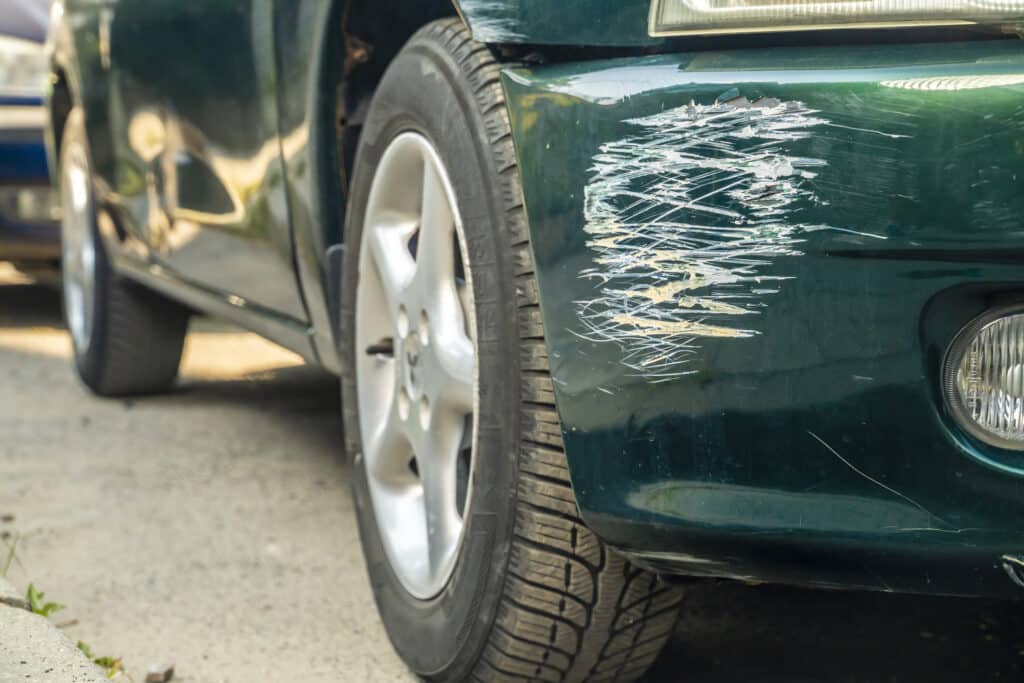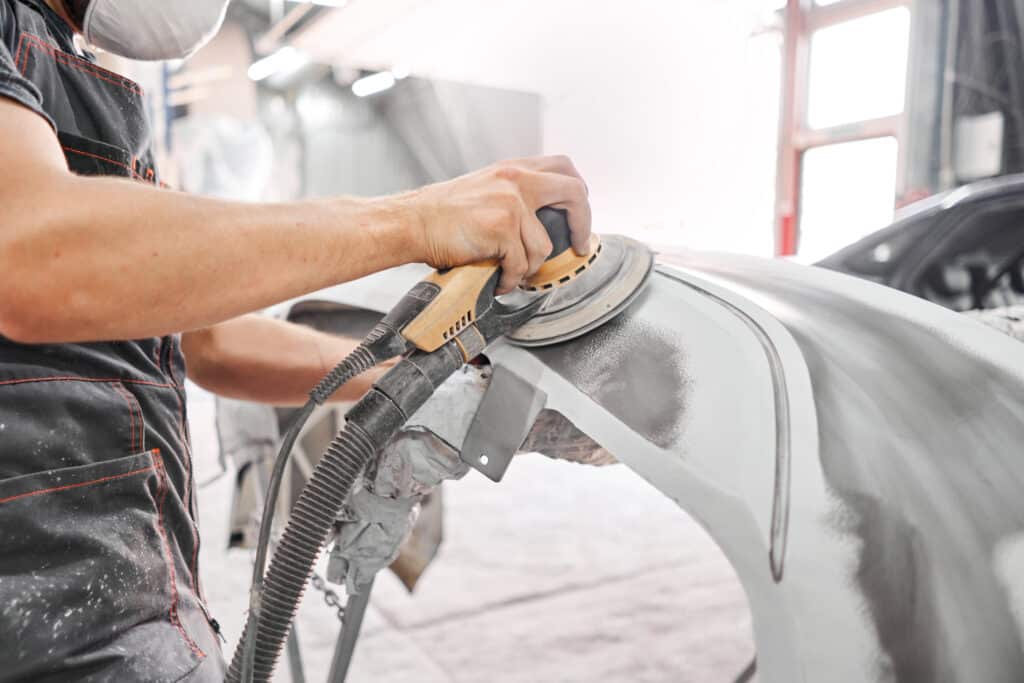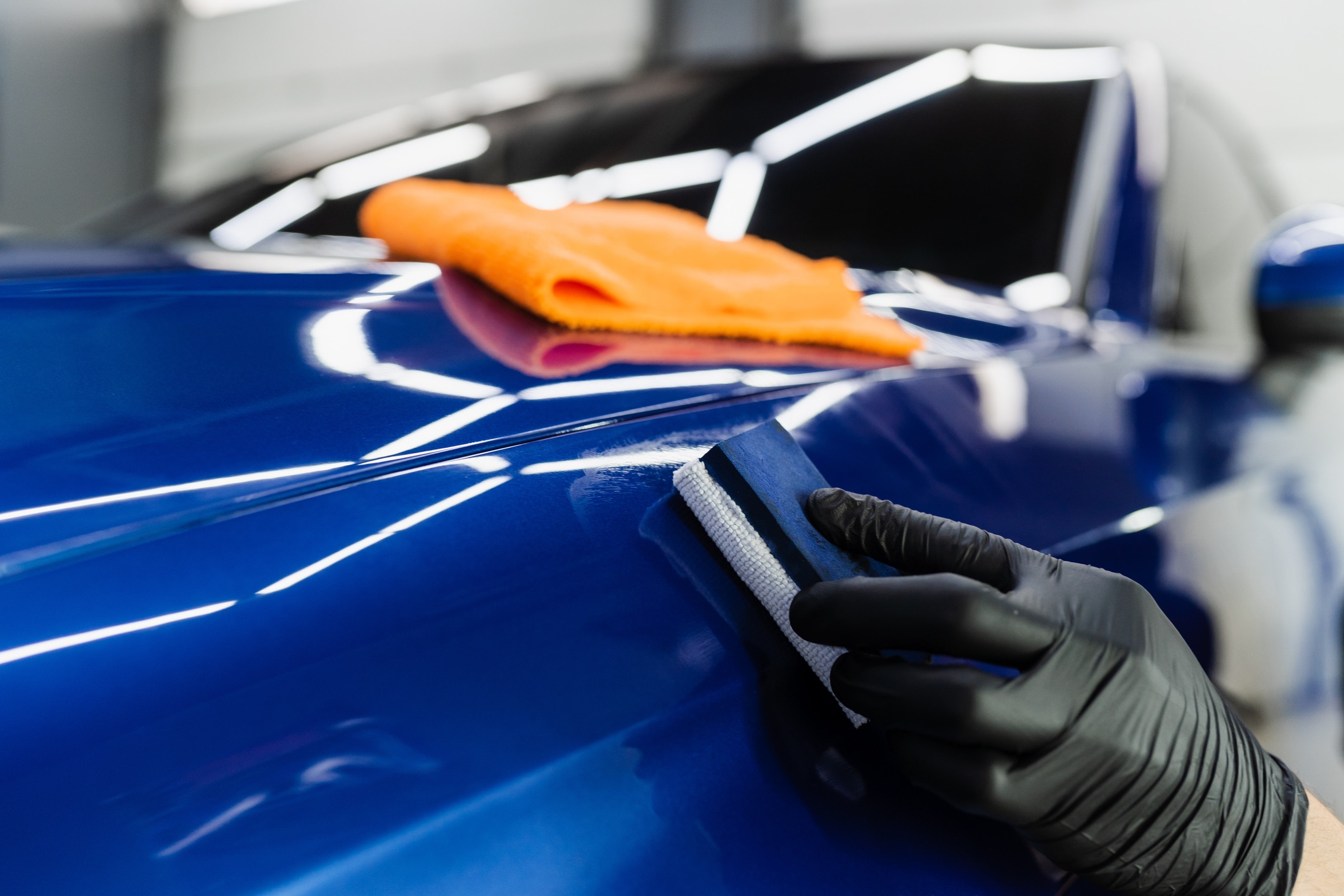Strength and durability are highly sought-after properties for car owners who want to keep their car’s exterior looking as good as new for as long as possible. One of the ways they can achieve this is by adding an aftermarket ceramic coating. However, should the vehicle require repairs, this coating may need to be removed. With so many vehicle owners choosing to add a ceramic coating to their vehicle’s exterior, body shops should look into how it can be removed if necessary and decide whether this is a service they want to provide.
Here, we’ll be going into further detail on what a ceramic coating is, how it works, and when and why it might need to be removed.
What is ceramic coating?
Ceramic coating—sometimes referred to as nanocoating, hydrophobic, silica, glass, or quartz coating—is when a material is covered with ceramic compounds to improve its physical properties. This type of coating adds electrical and thermal insulation to materials while also helping to prevent corrosion and improve chemical resistance, which is why it’s so popular for vehicles. Car owners might choose to get a ceramic coating to keep their vehicle scratch-free; however, it’s worth noting that the coating can only lower the risk of scratches and doesn’t always offer full protection.
So, how does it work? A ceramic coating compound is applied to substrates, where it can then bind to the material. Once it hardens, it creates a thin but sturdy protective layer of ceramic material, which deposits additional properties into the material.
The typical composition of ceramic coating is silicon dioxide, although other commonly used chemical combinations include titanium dioxide, aluminium oxide, and zirconium dioxide. For many automotive applications, the coating comes in liquid form and will contain ceramic coating resin and additives, allowing it to easily adhere to the vehicle’s surface.
The main thing to note as an automotive bodywork professional is that ceramic coatings aren’t always obvious. So, since they’re quickly gaining popularity, it might be worth asking your customers whether they have had this added to their vehicle’s surface before you get to work on anything. In some cases, it could affect your work and the price you quote, as it may need to be removed for certain jobs.
Does ceramic coating always need to be removed?

In most collision repair cases where the vehicle has a ceramic coating, this will need to be completely removed on the affected panels. This applies to any repairs where you’d normally remove at least one layer of paint, even if it’s only for a SMART repair. It’s up to you whether you charge extra for this additional work and time. But if you choose to do so, it’s worth explaining this to the customer beforehand.
If the vehicle only has light scratching or marks, it may be possible to polish these out without removing the ceramic coating. But, as we’ll mention later, polishing can also remove the coating, so you’ll need to be careful with this.
Is ceramic coating difficult to remove?
Ceramic coating requires a bit of extra work to remove. But the good news is that it doesn’t usually require any special tools or techniques—you’ll simply need to treat it as an additional layer that must be sanded or polished away. One difficulty you might come across is seeing where the ceramic coating covers and where it doesn’t. This can be something that makes repairs trickier and more time-consuming.
How to remove ceramic coating ahead of repair
Just as body shops can choose to offer ceramic coating, it’s also up to them to decide whether they want to offer ceramic coating removal as a service. If you’re unsure, it’s usually worth working out the costs associated with the extra work and doing your research into the additional time it might take. To help you decide, we’re taking you through our tips for working on a vehicle with a ceramic coating and the best ways to remove it.
Firstly, carrying out repairs with the ceramic coating intact is not recommended since this can lead to some issues with paint adhering to the surface properly. While it can sometimes be removed in a localised area and reapplied at a later date, this might differ depending on the application and other factors.

We do, however, suggest asking the customer for any information they have about the detailer or ceramic coating specialist who applied the ceramic coating since this could provide a steer on how best to remove it. They might also give you some insight into the chemical composition, helping you to determine which removal methods will work and a better understanding of what you’re working with.
The first method you should try when attempting to remove the ceramic coating is thoroughly cleaning the car’s surface. Start by shampooing it with a sponge, rinsing this off, and then using a clay bar to remove any extra dirt. For old, worn-down ceramic coatings, this can sometimes be enough to remove it. If this method doesn’t work, you can then move on to harsher techniques.
If you’ll be removing multiple paint layers for the collision repair on a panel or area, the best removal method may be sanding. This should be done gradually so that you can see exactly how far down to the vehicle’s surface you’ve gone. However, since the ceramic coating sits on top of the clear coat, this is an effective way to remove it.
Meanwhile, if you don’t plan on removing layers of paint, you can try polishing the vehicle’s surface to remove the ceramic coating. A padded orbital polisher with a polishing compound should be enough to do the trick and scrape away the ceramic coating.
If these two methods fail, an alkaline-based degreaser should easily break down the ceramic coating and remove it from the surface. Take a clean cloth and small amounts of the degreaser at a time to rub it away.
Alloy wheel ceramic coating can also be removed, although you might need to use alternative methods due to the nature of the materials. For instance, alkaline-based degreasers may affect the paint on alloys and should be avoided.
If you’ve been experiencing an increase in customer enquiries relating to this topic, we hope our guide has proved useful in offering some insight into ceramic coatings and best practice associated with their removal during the collision repair process. For further automotive tips and advice, head to the JTAPE blog.

